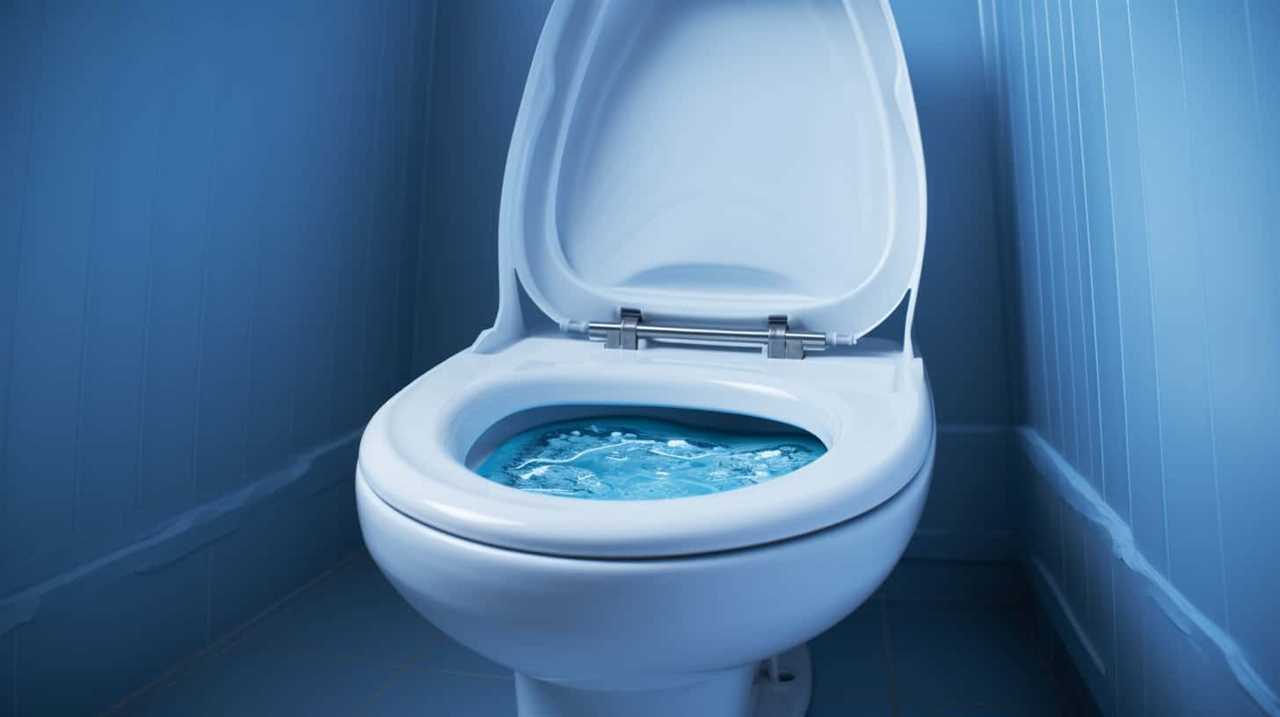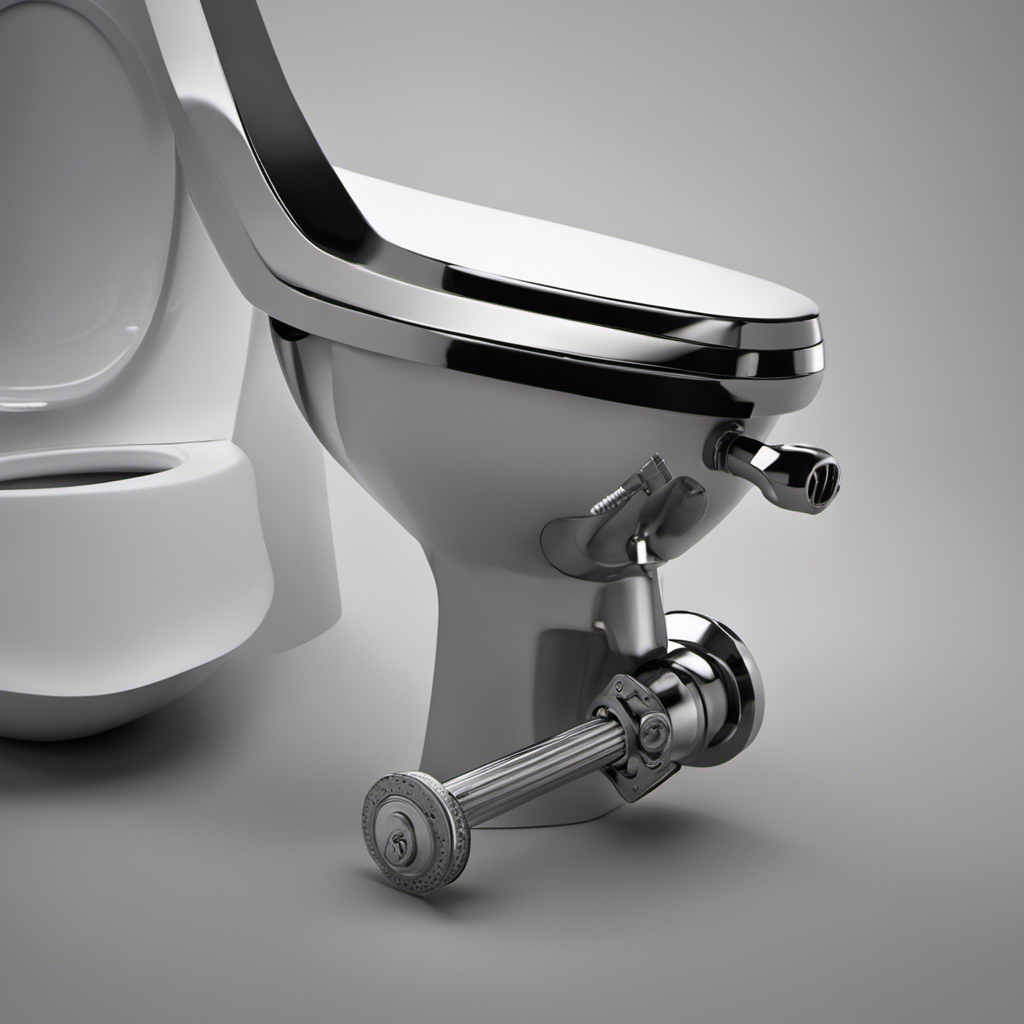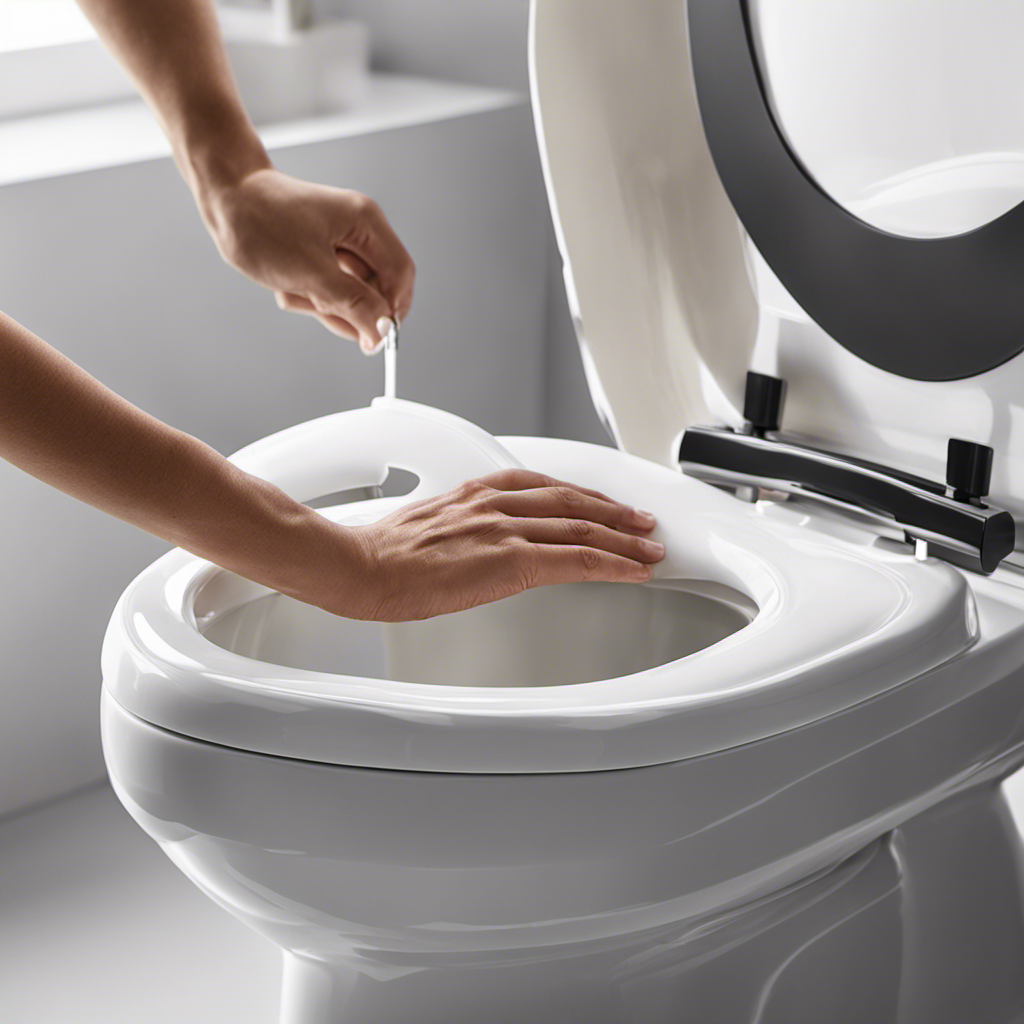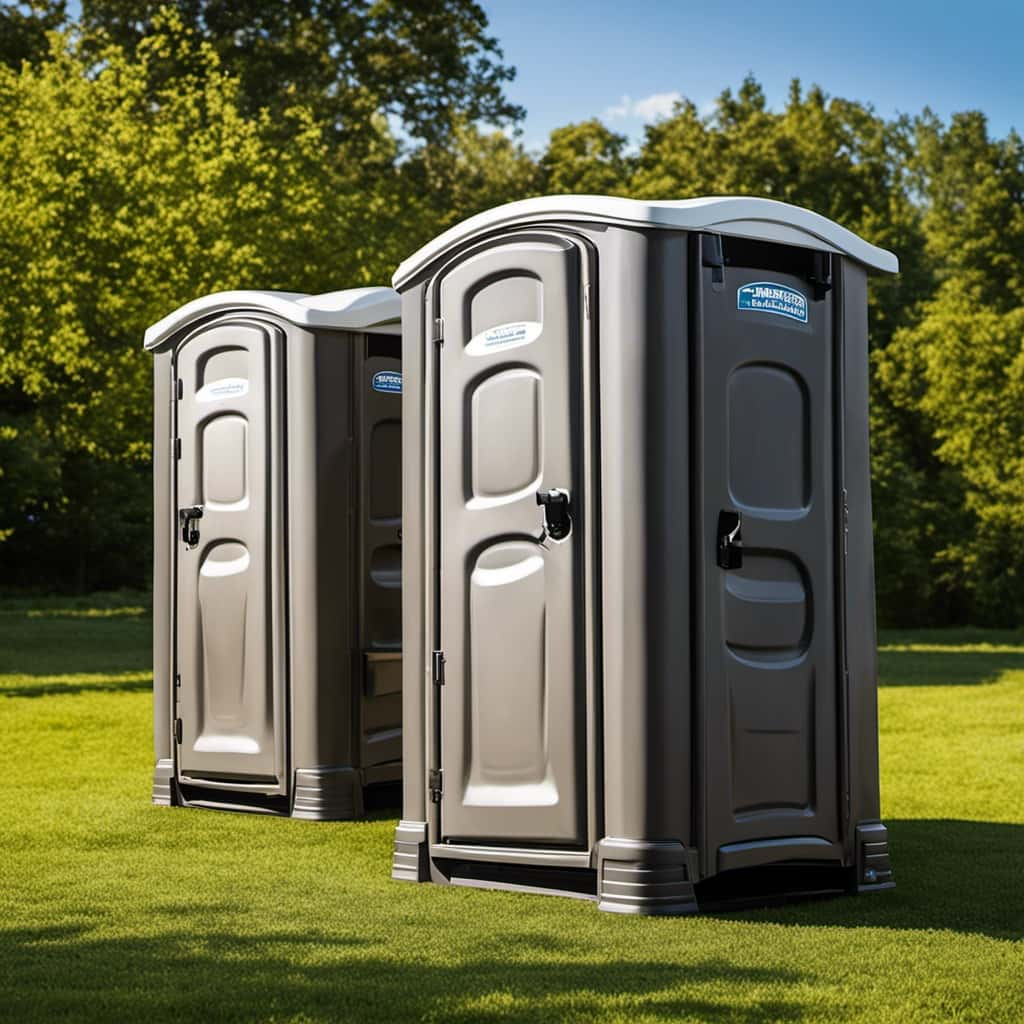You may be asking yourself, ‘Why wouldn’t a toilet flush?’ Don’t worry, we have all the technical explanations ready for you.
From a clogged toilet drain to a malfunctioning flapper valve, there are numerous factors that can disrupt the flushing process.
In this article, we’ll delve into each potential issue, providing you with the expertise you need to troubleshoot and fix your toilet.
Get ready to master the art of toilet maintenance!
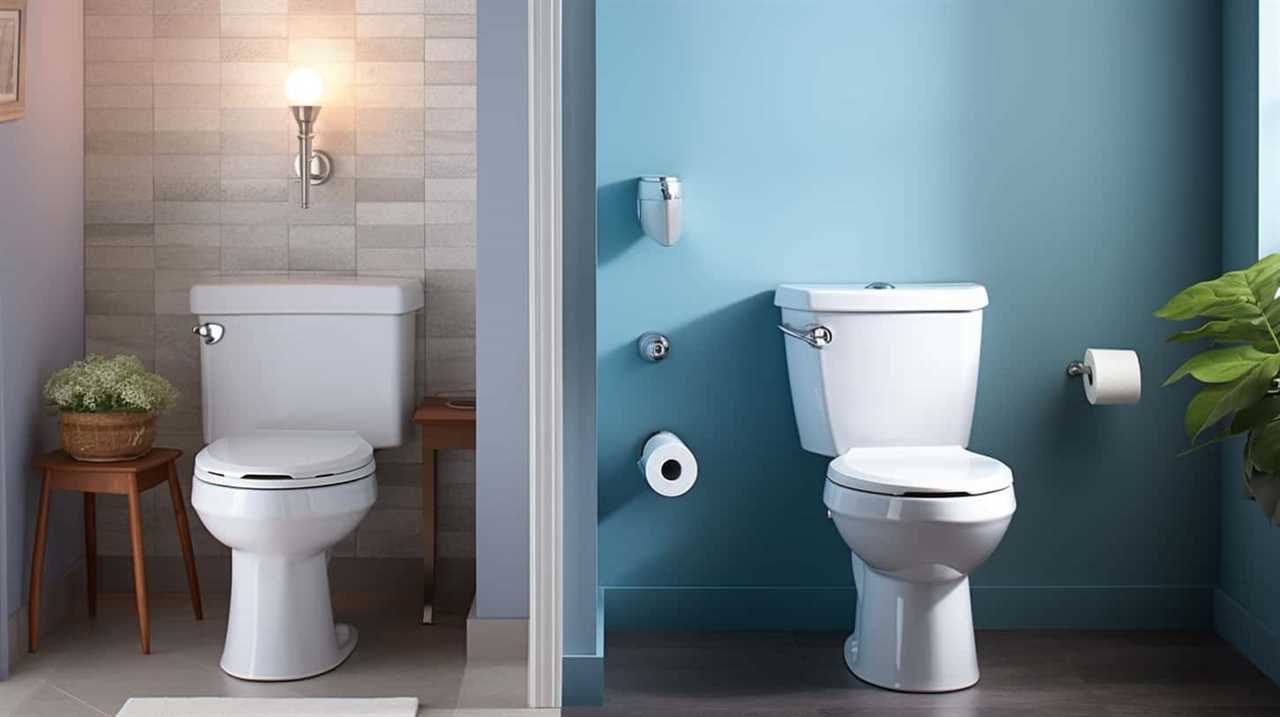
Key Takeaways
- Clogged drain and malfunctioning flapper valve can cause a toilet not to flush properly.
- Broken lift chain and insufficient water level in the bowl can also lead to flushing issues.
- A faulty flush handle and blocked vent pipe can hinder the flushing capability of a toilet.
- Airflow obstruction and low water pressure are common causes of toilet flushing problems.
Clogged Toilet Drain
One common cause of a toilet not flushing is a clogged toilet drain. When the drain is obstructed, water can’t flow freely, leading to a backup and preventing the toilet from flushing properly. A clogged drain can occur due to various reasons, such as excessive toilet paper usage, foreign objects being flushed down the toilet, or a buildup of waste material over time. When faced with a clogged toilet drain, it’s important to address the issue promptly to prevent further complications, such as toilet bowl overflow. One effective tool to clear a clogged drain is a toilet auger. This specialized tool is designed to reach deep into the drain and break up the blockage, allowing water to flow freely and restore the toilet’s flushing capability.
Transitioning into the subsequent section about the malfunctioning flapper valve, it’s worth noting that a clogged drain isn’t the only culprit behind a toilet’s failure to flush.
Malfunctioning Flapper Valve
When a toilet fails to flush, one possible cause is a malfunctioning flapper valve. The flapper valve, located at the bottom of the toilet tank, is responsible for regulating the flow of water from the tank into the bowl during a flush. If the flapper valve gets stuck in the closed position, it can prevent water from entering the bowl and cause the toilet not to flush properly.
In such cases, the flapper valve may need to be replaced in order to restore proper flushing functionality.
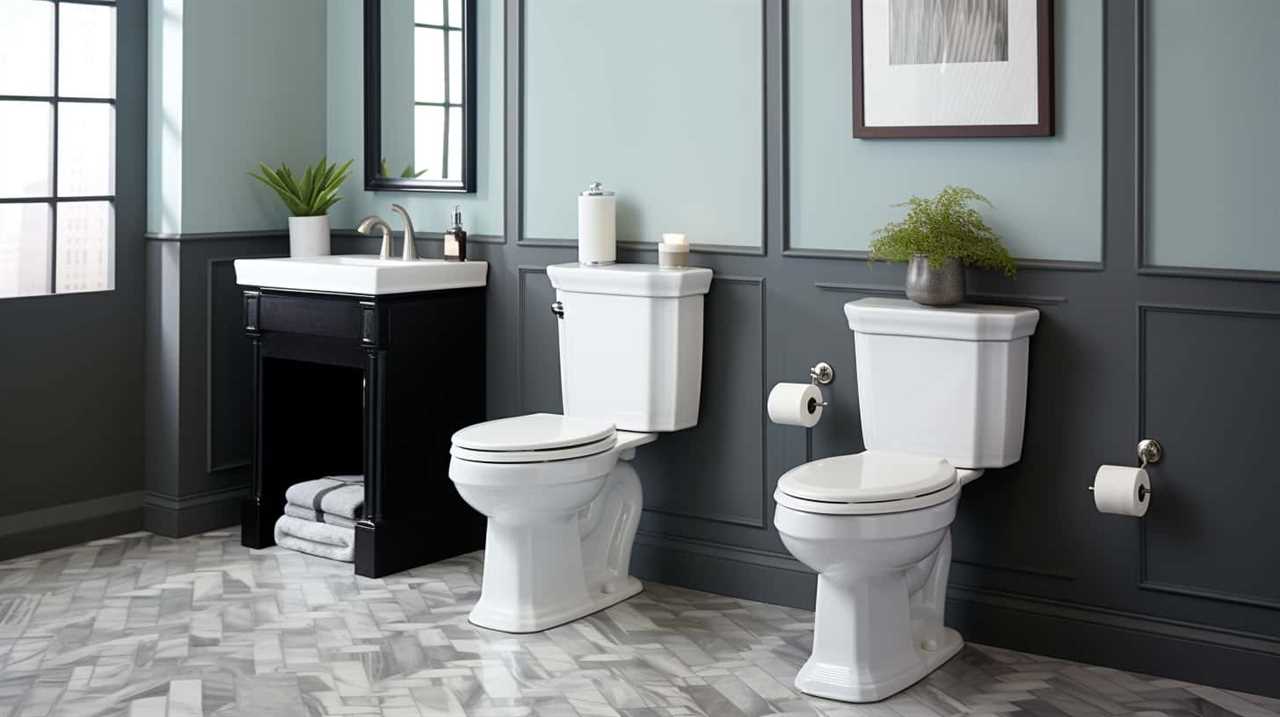
Stuck Flapper Valve
A malfunctioning flapper valve can prevent us from flushing the toilet. This vital component controls the flow of water from the tank into the bowl. When it gets stuck, it disrupts the flushing process and can lead to a non-functional toilet.
To troubleshoot a stuck flapper valve, consider the following:
- Check for debris: Inspect the flapper valve for any dirt, mineral deposits, or other obstructions that might be causing it to stick.
- Adjust the chain length: Make sure the chain connecting the flapper valve to the flush handle is properly adjusted. If it’s too tight or too loose, it can interfere with the valve’s movement.
- Clean or replace the flapper valve: If the flapper valve is damaged or worn out, it may need to be cleaned or replaced to restore proper functioning.
- Test the water level: Ensure that the water level in the tank isn’t too high or too low, as this can affect the flapper valve’s operation.
- Verify proper installation: Double-check that the flapper valve is correctly installed and aligned with the flush valve opening.
If troubleshooting doesn’t resolve the issue, it may be necessary to replace the flapper valve altogether.
Flapper Valve Replacement
To replace a malfunctioning flapper valve, we will need to follow a few simple steps. First, make sure to turn off the water supply to the toilet by closing the shut-off valve located near the base of the toilet. Next, remove the tank lid and locate the flapper valve, which is usually a rubber or plastic seal that covers the flush valve opening. Remove the old flapper valve by disconnecting it from the chain or lever attached to it. Take note of the size and shape of the old flapper valve to ensure proper replacement. Install the new flapper valve by attaching it to the chain or lever and making sure it covers the flush valve opening completely. Finally, turn on the water supply and test the toilet for proper flushing.
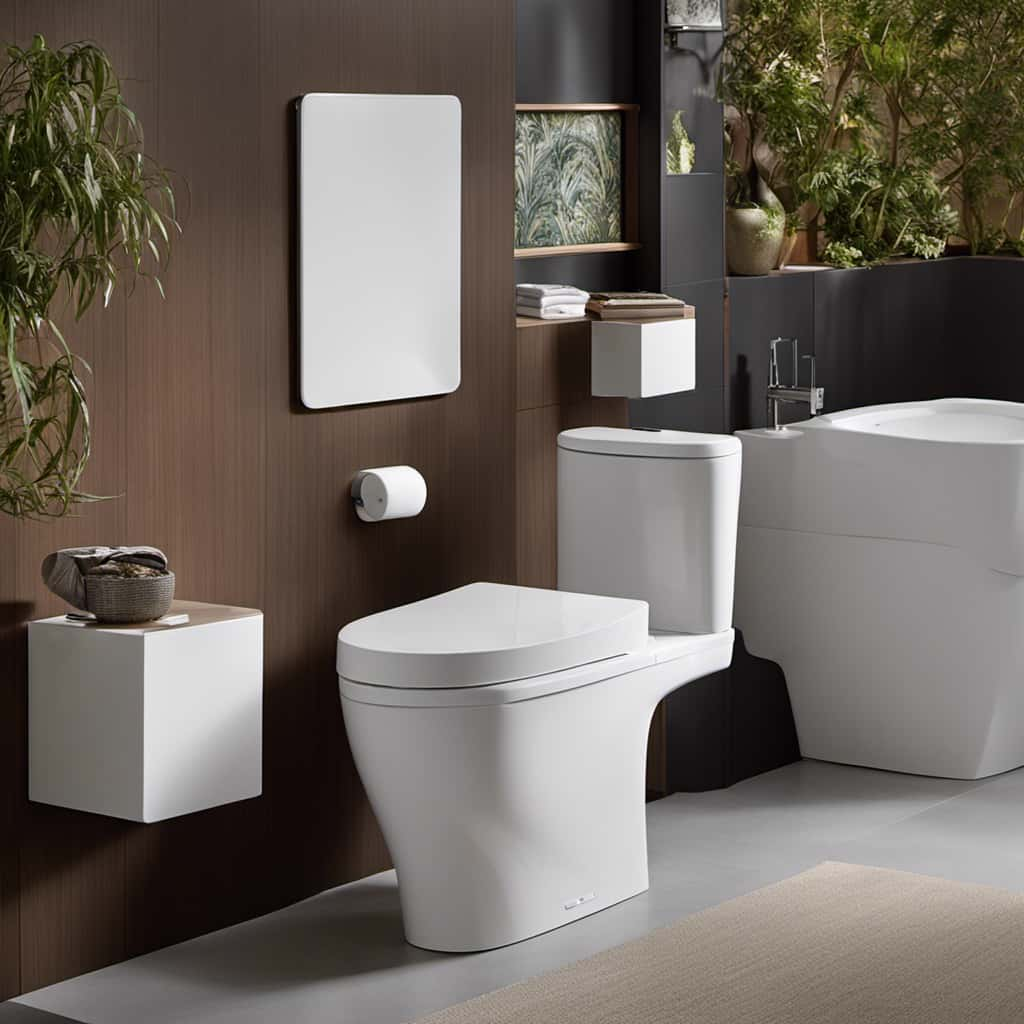
| Step | Description |
|---|---|
| 1 | Turn off the water supply by closing the shut-off valve. |
| 2 | Remove the tank lid and locate the flapper valve. |
| 3 | Disconnect the old flapper valve from the chain or lever. |
| 4 | Install the new flapper valve, ensuring it covers the flush valve opening completely. |
| 5 | Turn on the water supply and test the toilet for proper flushing. |
Regular flapper valve maintenance is essential to prevent issues with toilet flushing. Troubleshooting a flapper valve involves identifying common problems such as leaks, improper sealing, or deterioration. If the flapper valve is not sealing properly, it may need cleaning or replacement. Leaks can often be fixed by adjusting the chain or replacing the valve entirely. Remember to check the flapper valve periodically and address any issues promptly to avoid toilet flush problems.
Broken Lift Chain
One common cause of a toilet not flushing is a broken lift chain. The lift chain connects the toilet handle to the flapper valve, allowing the user to control the flushing mechanism. When the lift chain is broken, it prevents the handle from properly lifting the flapper valve, resulting in a toilet that won’t flush.
To resolve this issue, lift chain repair or toilet handle replacement is necessary. Here are five possible solutions to fix a broken lift chain:
- Check the lift chain for any visible signs of damage or disconnection.
- Adjust the length of the lift chain to ensure proper tension and functionality.
- Replace the lift chain with a new one if it’s severely damaged or beyond repair.
- Install a toilet handle replacement kit that includes a new lift chain.
- Seek professional assistance if the lift chain repair or toilet handle replacement seems challenging or unfamiliar.
Insufficient Water Level
Now let’s delve into the issue of insufficient water level, which can continue to hinder the proper functioning of the toilet flush. When the water level in the toilet bowl is inadequate, it can result in a weak or incomplete flush. This can be caused by low water pressure, which restricts the amount of water that enters the bowl during a flush. To better understand the impact of insufficient water level, let’s take a look at the table below:
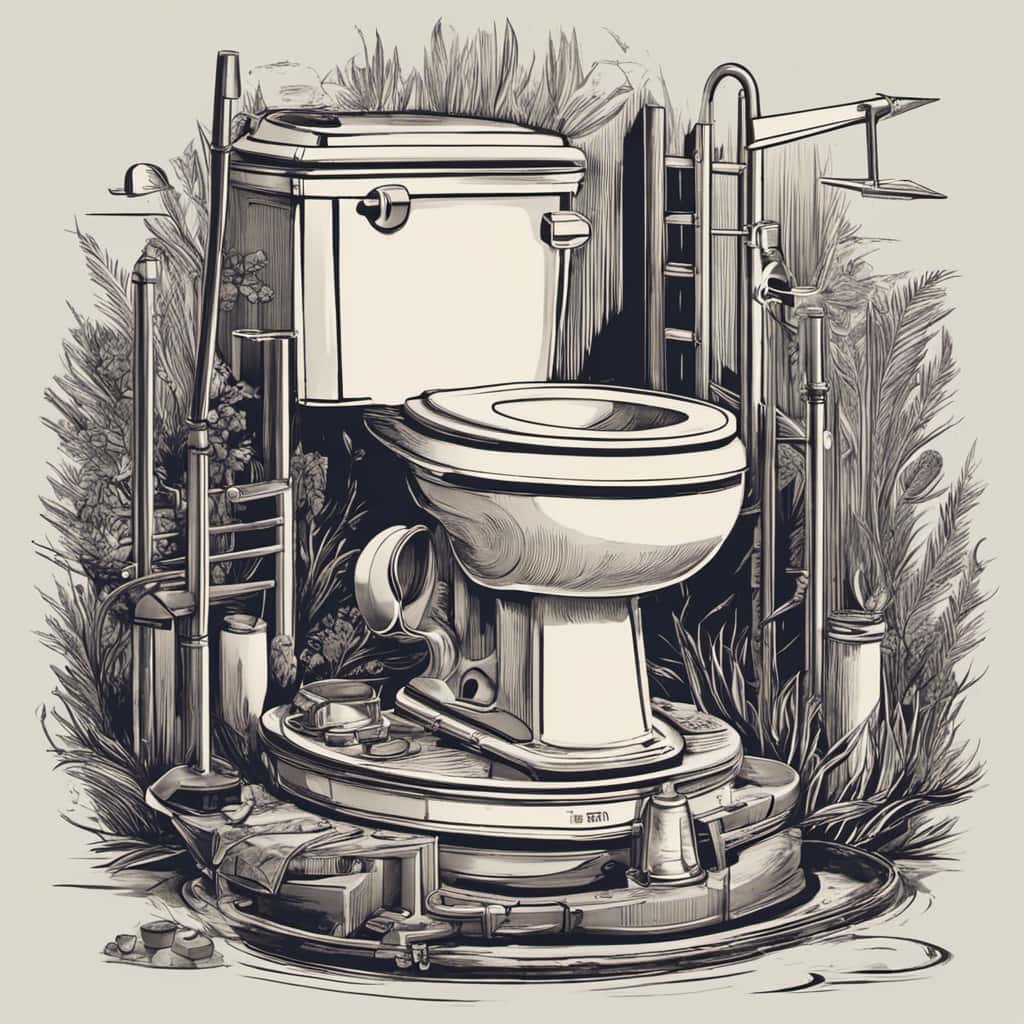
| Issue | Cause |
|---|---|
| Insufficient Water Level | Low water pressure in the plumbing system |
| Weak or Incomplete Flush | Inadequate water volume in the toilet bowl |
To fix this problem, it is necessary to address the root cause. If the water pressure is low, it may be necessary to check the main water supply and make adjustments if needed. Additionally, ensuring that the toilet tank is properly filled and that the fill valve is functioning correctly can help maintain an adequate water level in the toilet bowl. By addressing these issues, the toilet flush can be restored to its optimal functionality.
Faulty Flush Handle
Continuing from the previous subtopic, we encountered another potential issue that can prevent a toilet from flushing properly: a faulty flush handle. If you find yourself in a situation where the flush handle isn’t working as it should, here are some steps you can take to troubleshoot and repair the problem:
- Inspect the handle: Check if the handle is loose or broken. If it is, you may need to tighten the screws or replace the handle altogether.
- Check the chain: Ensure that the chain connected to the flush handle is properly attached and not tangled or too loose.
- Adjust the flapper: Sometimes, the flapper may not be sealing properly, causing a weak or incomplete flush. Adjusting the flapper or replacing it may solve the issue.
- Clean the handle mechanism: Over time, mineral deposits or debris can accumulate in the handle mechanism, affecting its functionality. Clean the mechanism thoroughly to restore proper operation.
- Seek professional help: If you’ve tried troubleshooting and repairing the flush handle without success, it’s best to consult a professional plumber who can diagnose and fix the problem efficiently.
Blocked Vent Pipe
We need to understand that a blocked vent pipe can cause a toilet not to flush properly.
When the vent pipe becomes clogged, it prevents the necessary airflow from entering the plumbing system, resulting in flushing problems.
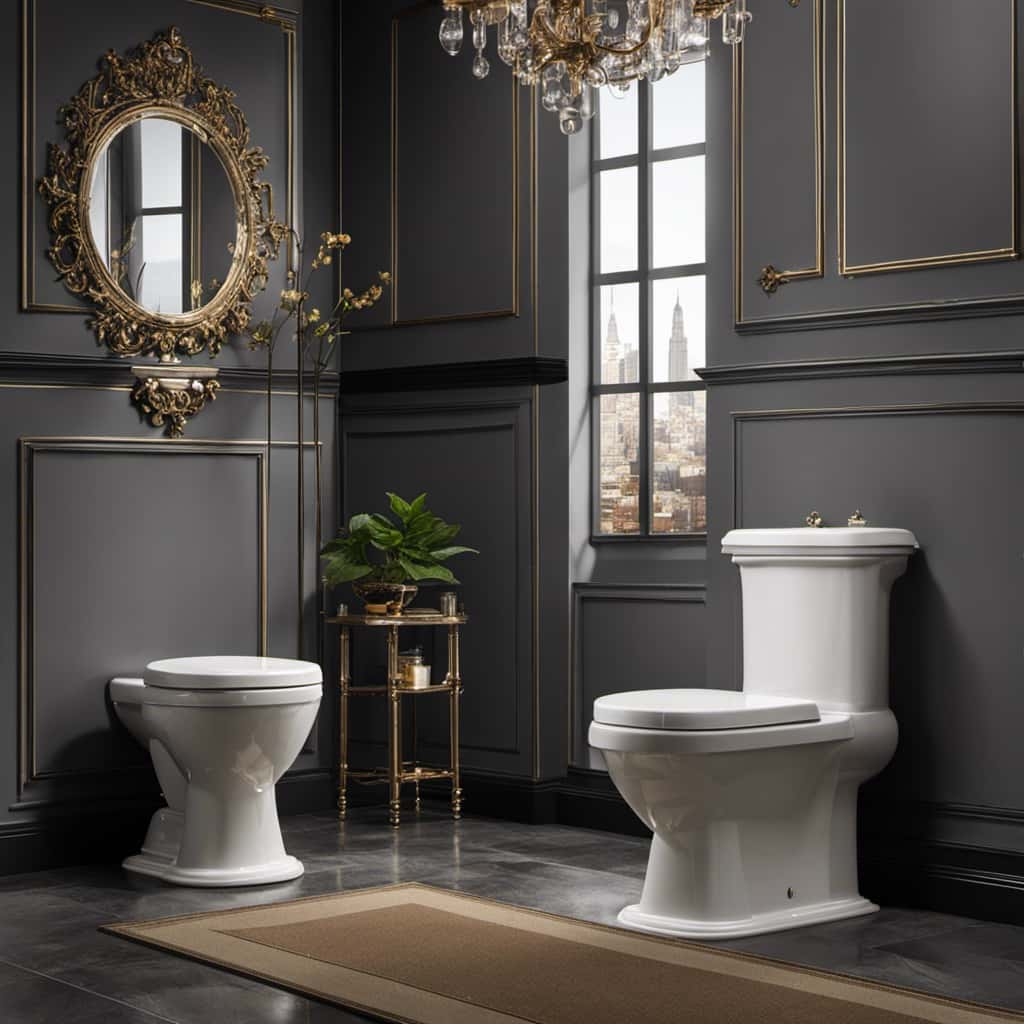
This obstruction can occur due to debris, such as leaves or animal nests, or even from ice buildup during cold weather.
Clogged Vent Pipe
One common cause of a toilet not flushing is a clogged vent pipe, which restricts the air flow necessary for proper flushing. A clogged vent pipe occurs when debris, such as leaves or animal nests, block the pathway of air from the plumbing system to the outside. This blockage prevents the proper release of air pressure, resulting in a weak or incomplete flush.
To identify a clogged vent pipe, look for symptoms such as gurgling sounds coming from drains, slow draining sinks or tubs, and foul odors. To address this issue, you can try using a plumber’s snake to remove the obstruction or call a professional plumber for assistance. Once the clogged vent pipe is cleared, the toilet should resume normal flushing.
Understanding the causes of clogged vent pipes can help you maintain a properly functioning plumbing system.
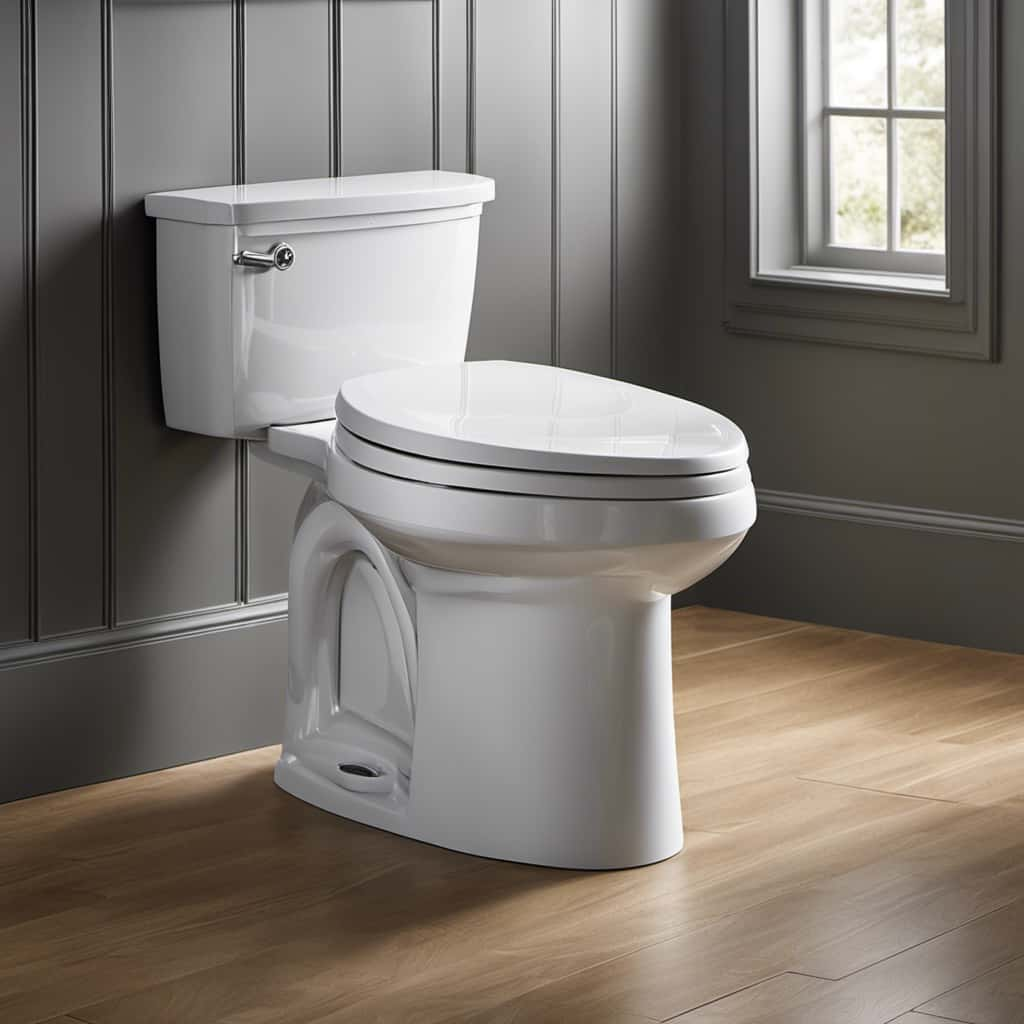
Moving on to the next topic, let’s discuss airflow obstruction and its impact on toilet flushing.
Airflow Obstruction
When a toilet fails to flush, it’s often due to an airflow obstruction caused by a blocked vent pipe.
The vent pipe is an essential part of a plumbing system, allowing air to enter the pipes and maintain proper air pressure.
If the vent pipe becomes blocked, it restricts the airflow and creates a negative pressure in the system.
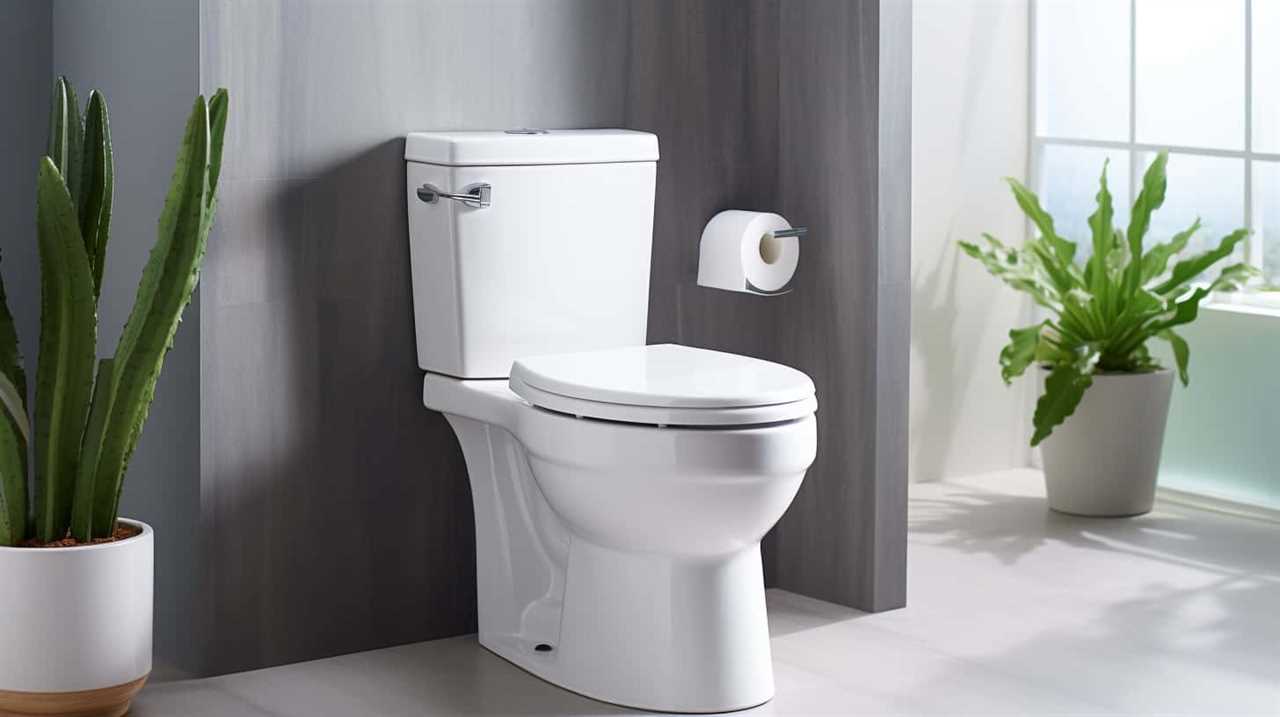
This negative pressure prevents the water from flowing smoothly and hinders the flushing process.
Without sufficient air pressure, the water can’t create the necessary force to push waste down the drain.
Additionally, a blocked vent pipe can also cause issues with water pressure, as the air pressure imbalance affects the overall balance of the plumbing system.
It’s important to regularly inspect and clean the vent pipe to ensure proper airflow and prevent toilet flushing problems.
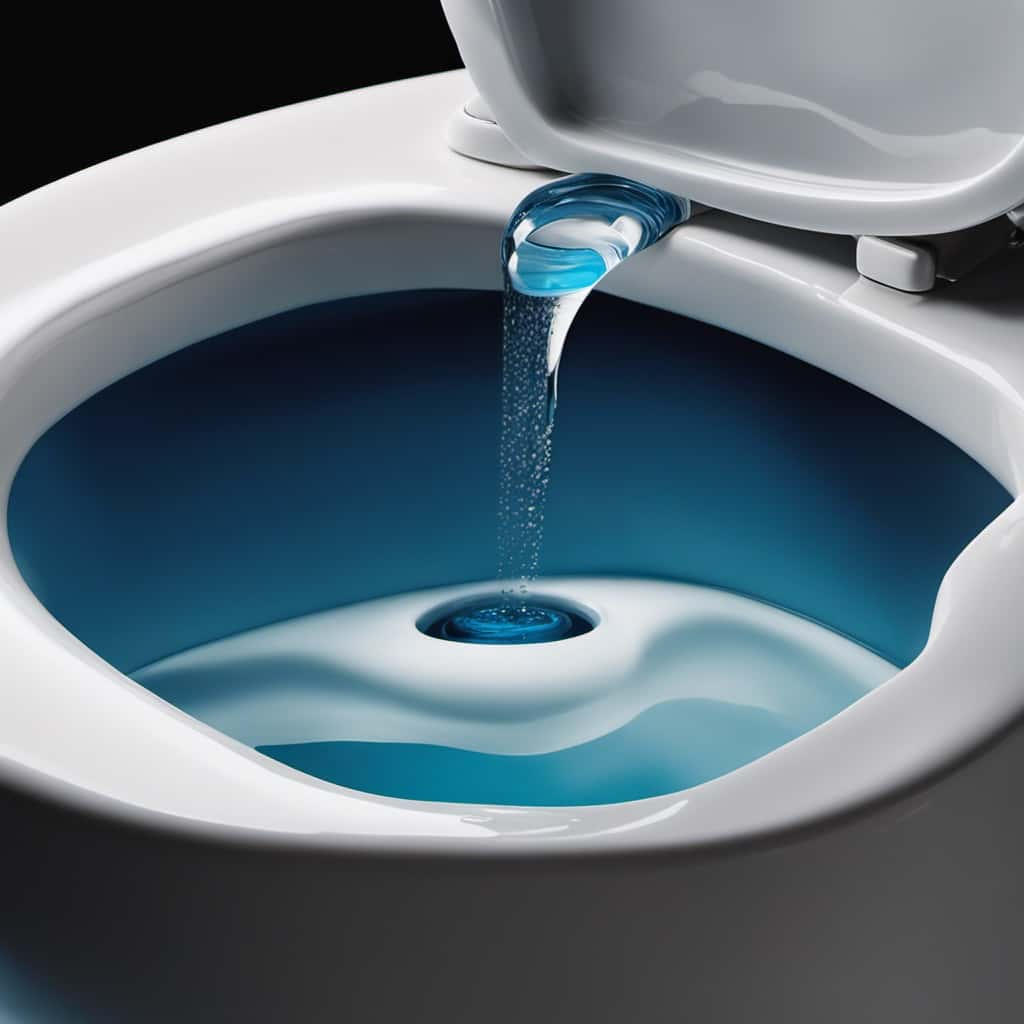
Flushing Problems Explained
As we continue our discussion on flushing problems, let’s delve into the issue of a blocked vent pipe and how it can affect the performance of a toilet.
The vent pipe is an essential component of the plumbing system, responsible for maintaining proper airflow and pressure within the system. When the vent pipe becomes blocked, it can lead to several problems that hinder the flushing mechanism of the toilet.
Here are five key issues that can arise due to a blocked vent pipe:
- Reduced suction power, resulting in weak flushing
- Increased risk of clogs and backups
- Inconsistent water levels in the toilet bowl
- Difficulty in flushing solid waste
- Malfunctioning of the toilet flush handle
Understanding these problems is crucial in troubleshooting and resolving flushing issues.
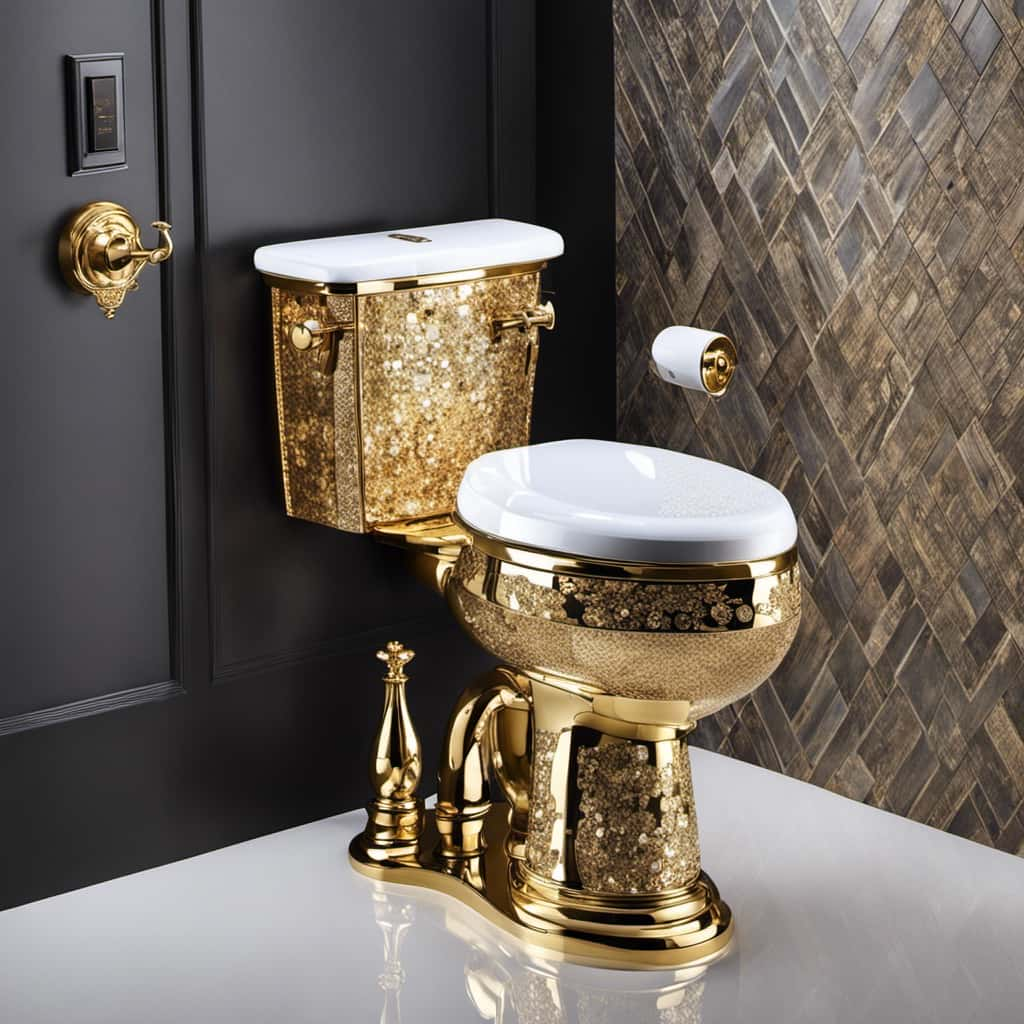
Now, let’s explore the next section, which discusses the impact of low water pressure on toilet performance.
Low Water Pressure
We often encounter the problem of low water pressure, causing toilets to fail to flush properly. Low water pressure can be caused by various factors, including a clogged water line, a malfunctioning pressure regulator, or a leak in the plumbing system.
To troubleshoot low water pressure, it’s important to check the water pressure from the main water supply. If the pressure is low, it may be necessary to contact a plumber to inspect and repair the issue. Additionally, checking for any visible leaks or blockages in the plumbing system can help identify the cause of the low water pressure.
Regular maintenance and inspection of the plumbing system can help prevent low water pressure and ensure proper flushing of toilets.
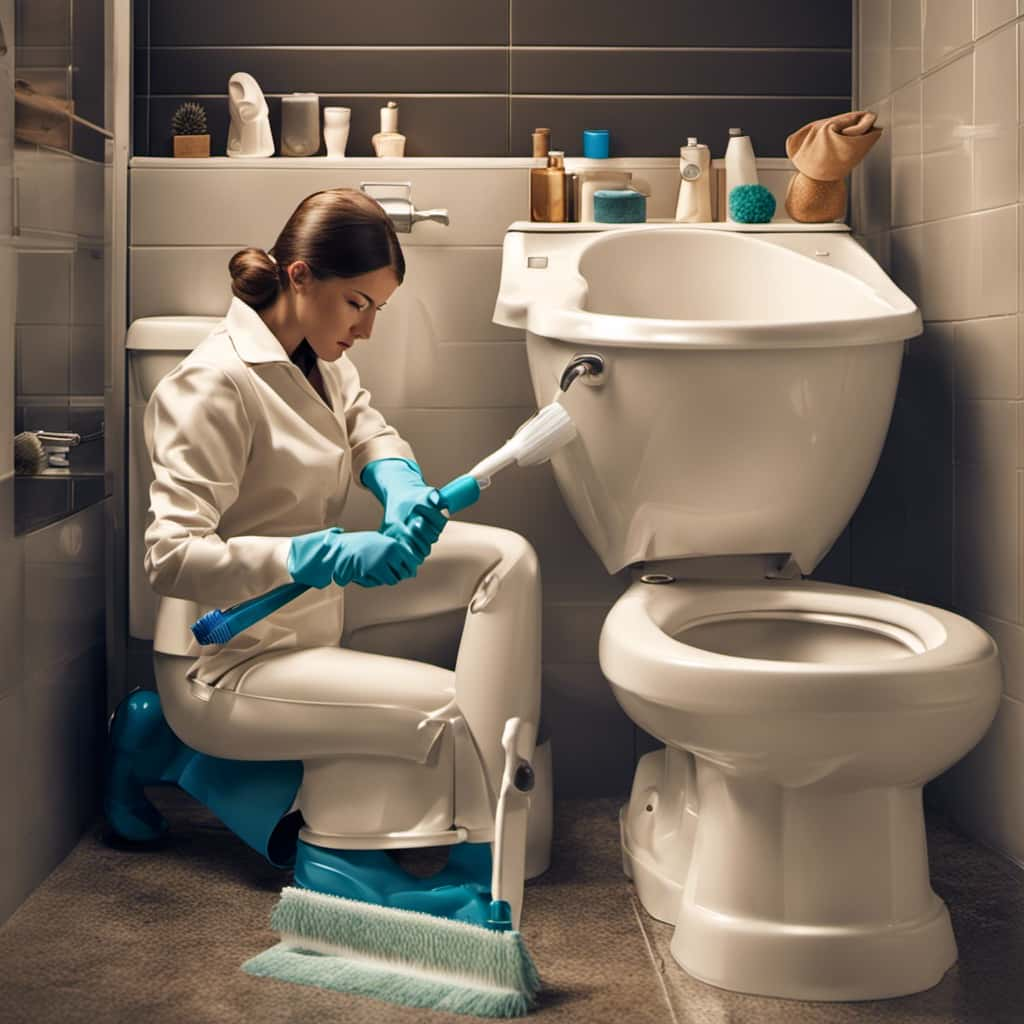
Damaged Fill Valve
One possible cause of a toilet not flushing is a damaged fill valve. The fill valve is responsible for controlling the water level in the toilet tank. If it becomes damaged or malfunctions, it can prevent the proper amount of water from entering the tank, resulting in a weak or non-existent flush.
To troubleshoot and repair a damaged fill valve, consider the following steps:
- Inspect the fill valve for any visible signs of damage, such as cracks or leaks.
- Check the water supply line connected to the fill valve for any obstructions or kinks.
- Adjust the fill valve’s float level to ensure it’s set at the recommended height.
- Clean the fill valve and its components to remove any debris or mineral deposits.
- Consider replacing the fill valve if it’s beyond repair or continues to cause flushing issues.
Faulty Flush Valve
A common cause of a toilet not flushing is a faulty flush valve. The flush valve is responsible for releasing water from the toilet tank into the toilet bowl when the flush lever is pressed. A faulty flush valve can prevent this process from happening, resulting in a weak or incomplete flush, or even no flush at all.
There are a few reasons why a flush valve may become faulty. One possibility is that the seal on the flush valve has worn out or become damaged over time. This can cause water to continuously leak from the tank into the bowl, resulting in a weak flush. Another possibility is that the flush valve itself has become stuck or clogged with debris, preventing it from opening fully when the flush lever is activated. In some cases, the flush valve may need to be replaced entirely if it’s beyond repair.
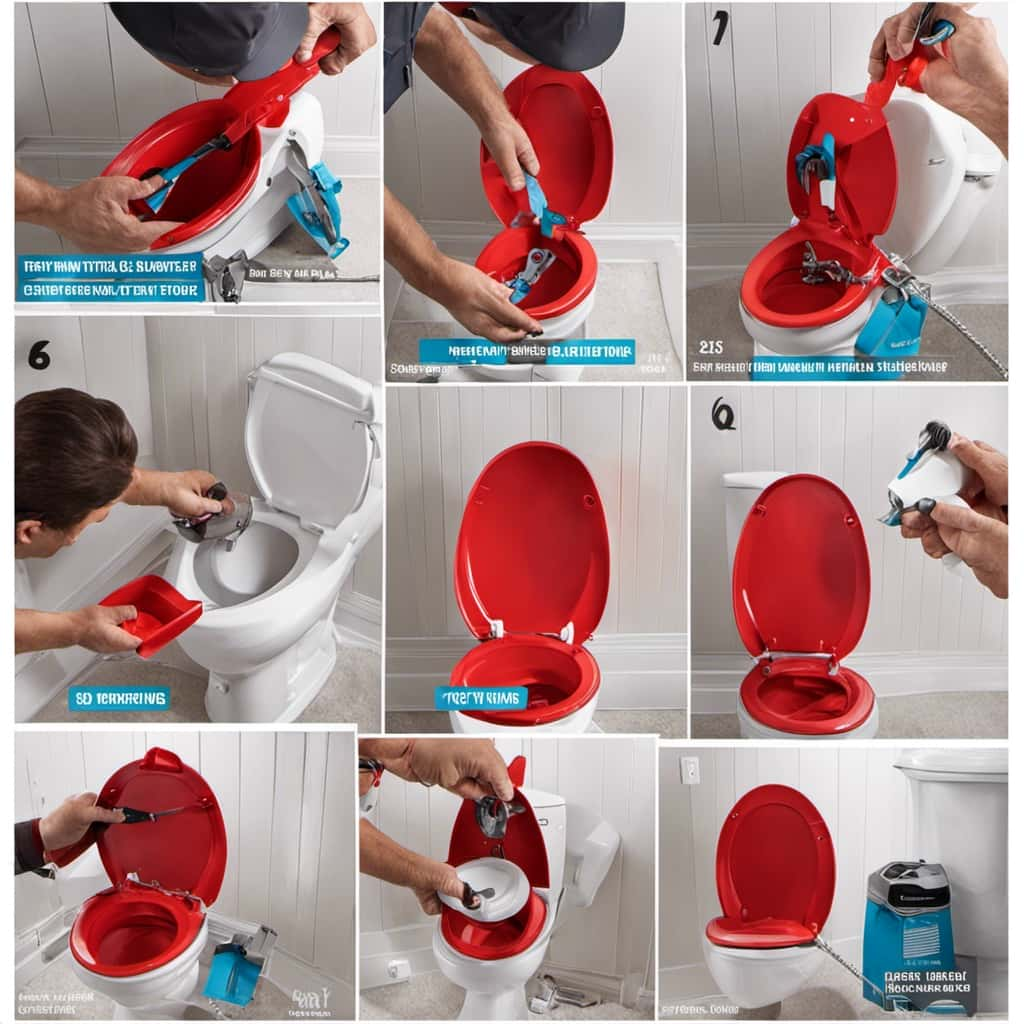
To fix a faulty flush valve, it’s necessary to first identify the cause of the issue. If the seal is worn out or damaged, it can typically be replaced with a new one. If the flush valve is clogged, it can be cleaned out using a toilet brush or a plumber’s snake. In more severe cases, where the flush valve needs to be replaced, it’s best to consult a professional plumber to ensure the job is done correctly.
Conclusion
In conclusion, a toilet not flushing can be caused by various factors such as:
- A clogged drain
- Malfunctioning flapper valve
- Broken lift chain
- Insufficient water level
- Faulty flush handle
- Blocked vent pipe
- Low water pressure
- Damaged fill valve
- Faulty flush valve
It’s important to address these issues promptly to ensure proper functioning of the toilet and avoid any inconvenience or frustration.
Remember, a well-maintained toilet is essential for a smooth and comfortable bathroom experience.
